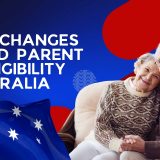Applying for an Australian partner visa is a significant step towards building a life together in Australia. Whether you’re married, in a de facto relationship, or planning to marry an Australian citizen, permanent resident, or eligible New Zealand citizen, navigating the visa application process requires careful preparation and attention to detail. Here are some essential tips to enhance your chances of a successful application:
1. Know Your Visa Options
Understanding the different types of partner visas available is crucial. Depending on your circumstances—whether you’re applying from within Australia or offshore—you may be eligible for a Prospective Marriage Visa (Subclass 300), Partner Visa Offshore (Subclasses 309 and 100), or Partner Visa Onshore (Subclass 820/801). Choosing the right subclass based on your situation is the first step towards a successful application.
2. Establish the Genuineness of Your Relationship
One of the primary criteria for a partner visa is proving the genuineness of your relationship. This involves demonstrating that your relationship is real and committed. Documenting your history together, such as shared finances, joint commitments, and mutual travels, strengthens your case.
3. Communicate and Stay Connected
Regular communication with your partner is not only essential for maintaining a healthy relationship but also for providing evidence of ongoing commitment. Ensure you have records of your communication—emails, messages, and call logs—to demonstrate the nature and duration of your relationship.
4. Be Prepared with Documentation
Submitting a ‘decision-ready’ application significantly reduces processing times. Gather all required documents, such as birth certificates, passports, proof of relationship (photos, joint accounts, correspondence), and police clearances, well in advance. This proactive approach shows preparedness and organization.
5. Understand Visa Validity and Requirements
Once granted, temporary partner visas (Subclass 820 and 309) allow you to live, work, and study in Australia. The permanent partner visas (Subclass 801 and 100) follow after a specified period, during which your relationship continues to be assessed. Understanding the validity periods and criteria for each stage of the visa is essential for planning your future in Australia.
6. Seek Professional Advice if Needed
Navigating the complexities of Australian immigration law can be daunting. Seeking advice from a registered migration agent or immigration lawyer can provide clarity on the process, ensure compliance with visa requirements, and improve the overall quality of your application.
Conclusion
Applying for an Australian partner visa requires careful planning, thorough documentation, and a genuine commitment to your relationship. By following these hot tips and understanding the intricacies of the visa process, you can enhance your chances of a successful outcome. Remember, preparation is key—submitting a comprehensive and ‘decision-ready’ application is your best strategy towards securing your future together in Australia.
For more information and updates on Australian partner visas, visit the official Department of Home Affairs website or consult a qualified migration professional.
—
This article aims to provide practical advice and guidance for individuals navigating the complexities of Australian partner visa applications, emphasizing the importance of preparation and documentation to ensure a smoother application process and increase approval chances.








